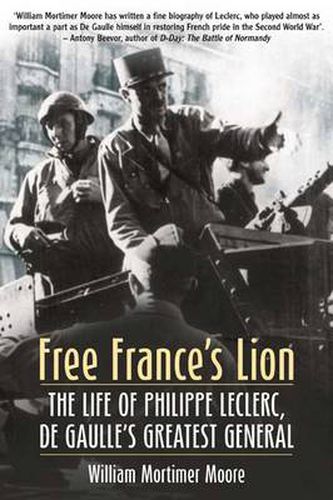Readings Newsletter
Become a Readings Member to make your shopping experience even easier.
Sign in or sign up for free!
You’re not far away from qualifying for FREE standard shipping within Australia
You’ve qualified for FREE standard shipping within Australia
The cart is loading…






But for his early death, many Frenchmen believe Leclerc would have been their greatest figure to emerge from World War II. De Gaulle himself admitted to his son-in-law that he gave up smoking when Leclerc died, in order to retain his health in case France needed him, because Leclerc was no longer there. From the fall of France until 1943, Leclerc dovetailed his operations with the British effort in North Africa, establishing himself as a dynamic combat leader in the battles against Rommel. But once the conflict shifted to European soil he became even more prominent as the commander of the 2nd French Armored Division. For the next two years he was under the operational control of either Patton’s Third Army, Hodges’ First Army, at the Westwall, or Patch’s Seventh Army in the south. His career not only includes the liberation of Paris, for which he is most famous, but the retaking of Strasbourg and the reduction of the Colmar Pocket. Surprisingly, Leclerc has never yet been the subject of a thorough biography in English. Aside from a fast-paced narrative covering combat at all levels of command, Leclerc’s story will make fascinating reading for any serious student of the full scope of World War II.
$9.00 standard shipping within Australia
FREE standard shipping within Australia for orders over $100.00
Express & International shipping calculated at checkout
But for his early death, many Frenchmen believe Leclerc would have been their greatest figure to emerge from World War II. De Gaulle himself admitted to his son-in-law that he gave up smoking when Leclerc died, in order to retain his health in case France needed him, because Leclerc was no longer there. From the fall of France until 1943, Leclerc dovetailed his operations with the British effort in North Africa, establishing himself as a dynamic combat leader in the battles against Rommel. But once the conflict shifted to European soil he became even more prominent as the commander of the 2nd French Armored Division. For the next two years he was under the operational control of either Patton’s Third Army, Hodges’ First Army, at the Westwall, or Patch’s Seventh Army in the south. His career not only includes the liberation of Paris, for which he is most famous, but the retaking of Strasbourg and the reduction of the Colmar Pocket. Surprisingly, Leclerc has never yet been the subject of a thorough biography in English. Aside from a fast-paced narrative covering combat at all levels of command, Leclerc’s story will make fascinating reading for any serious student of the full scope of World War II.